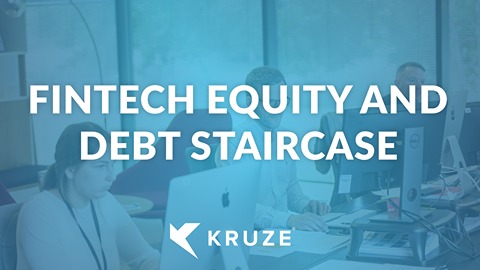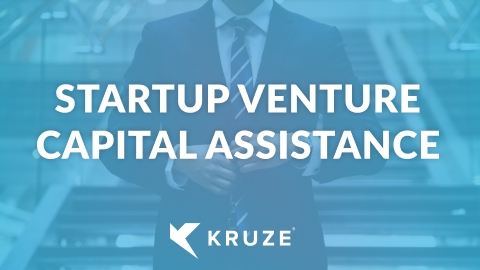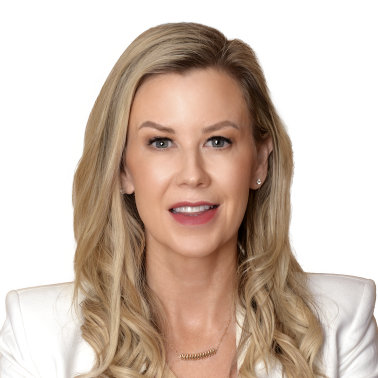
Pre-seed funds have exploded in popularity.
We’ll list out over 20 of the most active and best pre-seed funds below - click here to jump to the list.
We also list out recent pre-seed round valuations (and seed round valuations), dig into how big most of these financing rounds are, and give you some tips we’ve seen our clients successfully use to raise pre-seed, and seed, funding in today’s environment.
What is Pre-Seed Funding?
Pre-seed funding is a round of investment, typically $200,000 to $5,000,000, in a very early-stage company designed to help the founders 1) form a company, 2) get operations going and 3) achieve the milestones they need to hit to raise a seed round. Pre-seed rounds often leave “room” in the cap table for one or more subsequent seed financings.
Of course, like any round of financing, actually raising the capital is easier the more traction or proof points the startup has.
Certain funds are specialized in this stage of investing. Does your startup need one when you first start raising outside capital?
Growth in pre-seed funding
There are a lot of really good pre-seed funds right now. We are seeing pre-seed funds raise $50 million when they used to be around $10 million, which shows they are really growing. This is great news for founders, since pre-seed is there to get your startup going and help you build something that can then prove out your idea.
Some people call this stage “product market fit”, but we would say it’s not even product market fit. It is more like “minimum viable product.” Examples include things like:
- A simple SaaS solution that everyone can see is useful, ideally leading to a couple of customers signing up for it.
- A drug in development, that with pre-seed funding is able to start working on a compound.
- A health technology product that has interest from health systems.
The Pre-Seed Funding Statistics in 2024
According to the latest data from PitchBook, pre-seed funding has shown some interesting trends:
- The average pre-seed round size in Q2 2024 was $990,000, and Q1 2024 was over $1.2 million, showing a significant increase from the 2023 figures.
- The median pre-seed round size in Q2 2024 was $500,000, indicating that while some rounds are getting larger, the typical round size remains consistent with historical trends.
It’s important to note that these figures are likely to increase as PitchBook collects more data for Q2 2024, suggesting an even more robust funding environment for early-stage startups.
We’ll talk more about the trends impacting pre-seed round sizes, in a moment, but first, let’s take a look at average and median valuations.
Average Pre-Seed Valuations 2024
Pre-seed valuations have seen notable growth:
- The average pre-money valuation for pre-seed rounds in Q2 2024 was $5.3 million.
- The median pre-money valuation reached $5.7 million in the same period.
- The $7 million median and $10 million average valuations from Q1 are probably close to where the data will fall out for the first half of the year
This represents a substantial increase from the 2023 figures, suggesting a more favorable environment for early-stage startups seeking funding. It’s also up from the bubble time of 2021 (for the most part), which is pretty interesting. As with the funding statistics, we expect these valuation figures to rise further as more data becomes available for Q2 2024.
Let’s discuss the trends:
What’s going on with Seed stage valuations?
The trend of increasing seed stage valuations has continued into 2024:
- In Q1 2024, the average pre-money valuation for seed rounds reached $7.0 million.
- The median pre-money valuation for seed rounds in Q1 2024 was an impressive $10.2 million.
The flip side is that volume is down - our best data seems to indicate that there are about two thirds the number of rounds getting closed at this stage as there were during the bubble. But, with higher valuations and solid round sizes, the companies that are able to raise are seeing attractive metrics. This trend suggests that investors are placing a premium on startups that have demonstrated significant progress and potential, even at the pre-seed stage. Our anecdotal evidence working with 800+ funded startups would agree with this s are hungry for great companies, and are willing to pay to get into them.

The imbalance between supply and demand for promising early-stage startups is driving valuations upward, creating a favorable environment for entrepreneurs with compelling ideas and strong execution capabilities. Of course, you’ve got a lot to prove before you can get the next round raised, so use the capital wisely!
Structure of Pre-Seed Rounds
According to recent data from Carta, the structure of pre-seed rounds is aligned with what we are seeing here at Kruze - lots of SAFEs, some modest discounts, preferred shares if the round size is big enough.
Prevalence of SAFEs
Simple Agreements for Future Equity (SAFEs) have become the dominant instrument for pre-seed funding:
- Approximately 80% of pre-seed rounds use SAFEs as their primary funding instrument.
- This high percentage underscores the popularity of SAFEs due to their simplicity and flexibility for both founders and investors.
- 85% of SAFEs are post-money SAFEs.
SAFE Discounts and Valuation Caps
It’s pretty normal to offer investors a discount on the conversion price, but it varies:
- 95% of pre-seed SAFEs have a valuation cap according to Carta.
- 4% are discount only, and 1% have no discount and no cap!
- The most common discount rate is 20%, used in about half of all pre-seed SAFE rounds; this is what we consider the standard discount.
Changes in Larger Rounds
As the size of the pre-seed round increases, there are noticeable shifts in the structure:
- For rounds under $1 million, SAFEs are overwhelmingly preferred, used in 80% to close to 100% of cases.
- As round sizes exceed $1 million, the use of priced equity rounds becomes more common:
- Rounds between $1-2 million see about 30% structured as priced equity.
- For rounds over $2-3 million, nearly 50% are structured as priced equity rounds.
- Over $3 million and priced - i.e. preferred stock - rounds become more common.
This trend suggests that larger pre-seed rounds often involve more complex negotiations and a desire for clearer terms, leading to a higher proportion of priced equity structures.
Valuation Caps
Valuation caps on SAFEs also tend to increase with larger round sizes:
- For rounds under $1 million, the median valuation cap is around $8 million.
- Rounds between $1-2 million see median caps increase to about $10 million.
- For rounds over $2 million, median valuation caps can reach $12 million or more.

These Carta insights provide valuable information for founders and investors alike, offering a clear picture of current trends in pre-seed funding structures. Understanding these patterns can help entrepreneurs make informed decisions when structuring their early-stage funding rounds.
Who Benefits from Pre-Seed Funding?
Pre-seed funding is for really early stage startup founders, and it’s really for the “non-famous,” “non-repeat” founders. Founders with an established track record, like those who’ve done an IPO or have been successful before, are probably going to go straight to seed, possibly even series A, and immediately raise a big chunk of capital.
Venture capital firms, angel investors, and everyone else loves to back founders that have done it before. Even founders that may not have previously been successful can sometimes have an easier time raising money than first time founders. They can talk about all of the things they have learned, and they know how to talk to investors, run board meetings and, essentially, build something.
Usually pre-seed money is for a novel idea, often from a young founder, who other later-stage investors at series A, or even C, don’t want to take a chance on. We love this asset class here at Kruze because you are giving the truest form of entrepreneurs their first start. We really appreciate and respect the funds that do this.
Pre-seed funding can be dilutive
One thing to remember is that these very early funding rounds will probably be one of your startup’s most dilutive rounds as an entrepreneur. The reason for this is your startup valuation will be very low. Your goal here should be to take as little money as possible that will still let you prove out your idea.
We often see pre-seed rounds being between $500,000 - $1 million, with the valuation around the $5 million mark. This means you are still selling 10-20% of your startup. However, while a million dollars is a lot of dilution, pre-seed funding is for founders who really need that infusion of cash. The beautiful thing about taking that money, although you suffer dilution, is it means you are in business. If you build something awesome then you are going to be able to find follow-on money.
The process for pre-seed startups
There are three basics goal that a founder wants to achieve with this type of funding:
- Build a minimum viable product
- Demonstrate a desirable product to customers
- Gain the interest of seed or series A funds
That means pre-seed funds are the pipeline for seed and series A funds. Seed and series A funds are constantly talking to pre-seed funds to figure out who the best companies are in that pre-seed position. When they find a pre-seed fund with a successful company they become incentivized to help the startup raise money too.
There’s a huge amount of value in that introduction. It’s really helpful to gain someone who is experienced, who is in your corner, and who can give you guidance.
Other key players at this funding stage
There are a couple of other types of key players at the pre-seed stage:
Angel investors have been around forever. They go back to the dentists and doctors in Silicon Valley, somewhere between the 1950s and 1970s, who had a lot of cash and decided to put money into startups and Silicon Valley was born.
This means there are plenty of people out there that will want to write smaller checks in front or behind the pre-seed funds. This is another value that pre-seed funding brings: Angels will write you a term sheet, put their name on it, and price the deal. Once you get that signed term sheet, it becomes considerably easier to fill in the round. There is huge value in having a lead investor, even at the pre-seed stage. That helps you find other angels, like high-net-worth individuals, successful entrepreneurs, or people you know or have worked with before.
Another path you can take are incubators, like Y Combinator. Incubators provide a lot of value, including:
- You get a tremendous amount of coaching. You will get more coaching in the incubators than you do from a typical pre-seed fund.
- You have peers with whom you’re going through the startup process.
- You get the benefit of that incubator’s investor network.
This will lead to you doing demo days and presenting to investors. It is another really good way to raise a pre-seed.
Accelerators and incubators are sometimes used as synonyms, so comparing the difference between the two sources of pre-seed funding is a bit of splitting hairs. That being said, startup accelerator is a program designed to help startups accelerate their growth and progress at a rapid pace.
Accelerators are typically time-limited, spanning a few months, during which selected startups receive intensive mentoring, education, and access to resources. The focus of an accelerator is on accelerating the startup’s business model, refining their product or service, and preparing them for rapid scaling. Accelerators often typically take some ownershiop, and may provide a small investment in exchange for equity in the startup.
Making your startup dream a reality
We often see companies raise a pre-seed simultaneously with joining an incubator. Instead of just going to the incubator and getting $200,000, they will raise between $500,000 and $1 million. This means the company can build a little bit faster and make a little bit more progress while they’re part of the incubator.

Our advice to founders who haven’t been successful at raising funds at seed or series A is that if you’re offered a check from a pre-seed fund, bite the bullet, take the dilution, and get into business. At that point you control your own future. You can really reap the benefits of pre-seed funding to get your startup off the ground.
Advantages of Raising from a Pre-Seed Fund
It turns out that pre-seed funds are filling a really important niche in the market. These firms actually help increase the velocity of the earliest stages of venture capital. Greasing the wheels of Silicon Valley, in a way.
The first thing that pre-seed funds do is they set the terms and actually price a deal at the really early stage. This is incredibly valuable, because angel investors feel so much more comfortable coming into the deal and following a named institutional pre-seed fund.
And so, one of the core services a pre-seed fund is doing is just giving you a term sheet that sets the terms of the deal (such as the security type SAFE vs convert vs preferred, valuation, etc.). You can use them as the anchor investor, and use those terms to fill out the rest of the round. This is probably the most valuable thing they do.
The next thing that one of these funds will do, is that they get you thinking like a VC-backed company. It’s a huge shift from being bootstrapped or just a super scrappy, three ladies in a garage type of startup. When you take professional money, you have to start professionalizing in a way that helps the company and that helps you be prepared for your next round of financing. Professional financials, real board meetings, producing KPIs and metrics… These investors really helps you make that shift. And they do it kind of in a lower stakes environment than trying to do that after you’ve taken a 20 million dollar round and learning on the fly.
Another benefit is with recruiting. A well-known pre-seed fund can recruiting so much easier for you, because you have some incredible logos. Then you can put on your website that people recognize. And when employees are taking a job at your company, they’re really betting their capital, like their time. They’re going to be working for you and spending a lot of time on your company. And so, knowing that some bigger players, some institutional players are funding you really makes recruiting a lot easier.
It’s the same thing with customers, which is the next benefit of taking an investment from a pre-seed investor. Small customers probably don’t really care who the backers are. But, when they’re signing a multi hundred thousand dollar or a multimillion dollar deal with your startup, it really helps to have some institutional VCs that they can reference, that are on your website, and that they have confidence that will help get the company funded. If they’re signing up to use your service, they don’t want it to go away in six months because you ran out of money. This helps make your sales process easier.
Another huge benefit is that seed and Series A funds follow the best pre-seed investors like crazy. Leading seed and Series A investors want to see the deals that come out of the good pre-seed investors’ portfolios. The next stage of investors are going to trust the general partners of the pre-seed fund. Their reputations and contacts will make the next round of financing so much easier.
And the final big value-add from pre-seed funds is their LP-base. Now, LPs are investors in the funds. The investors in the pre-seed fund tend to invest in a lot of other kinds of funds including seed and Series A funds. It’s very common for positive word of mouth to start circulating on a company that they have seen in great updates to the LPs or even better at the Annual Investor Update Meeting. If you get to present to the LPs that’s really really valuable. You’ll have positive buzz. The LPs will probably mention your company to the Series A funds that they invest in. Again, valuable introductions. And, we’ve noticed a trend where the partners of traditional VC funds
These are some of the big benefits you get out of raising from a quality pre-seed fund.
Pre-Seed Investors Value Add
Why should you consider having pre-seed investors invest in your startup?
And who are the best pre-seed funds?
Who Provides This Type of Funding
There are several, common type of investors that founders use to raise pre-seed funding. This is a difficult round to raise, so we often see many founders raise from different investor types, sometimes at different moments.
Angel investors
- Angel investors are individuals who make relatively small investments, typically $25,000 to $100,000. Many founders reach out to friends and family - remember to be careful taking money from people close to you; taking on capital from people who are not aware of the high risks of the pre-seed stage may be an issue!
- They are often the sole decision makers, so you can usually secure pre-seed money quickly from angel investors.
- If they have already invested in your business in a previous round, they will already be invested in the success of your venture.
- The best angel investors can make introductions in your industry; many of our top founders reach out to CEOs and founders in their space to raise this round and find angel investors.
Accelerator or incubator programs
- Accelerator or incubator programs are like startup crash courses.
- Early-stage companies not only raise initial pre-seed capital (typically around $125,000), but they also gain access to an entrepreneurial community, helpful training, networking opportunities, free or discounted resources, and exposure to top-notch VCs for future funding rounds.
- Founders must go through an application process and, if accepted, follow the guidelines to complete the program.
- Not all programs are created equal - make sure you talk with founders who have already gone through the program before joining!
Pre-seed and seed investment venture capital funds
- Pre-seed and seed investment venture capital funds represent multiple limited partner investors.
- VC funds can offer larger investments during pre-seed rounds, but they also often have longer decision-making process.
- The amount of traction they like to see varies, so do some research before you outreach.
20+ Best Pre-SEED Venture Capital Funds
We are labeling these “venture capital funds” since they function as VC funds - a partnership raises capital from outside investors (“LPs”), and typically charges those investors the same rates that VCs charge their LPs. This list of pre-seed funds is based on the investors we see actively investing in the clients that we service.
- Pear.vc
- Precursor
- First Round Capital
- Susa Ventures
- Launch Capital
- Alumni Ventures (and their affiliated, school-focused funds)
- Slow Ventures
- Initialized Capital
- Union Labs
- Notation Capital
- Haystack
- K9 Ventures
- Founder Collective
- Maven Ventures
- Start Fund
- SOSV
- Right Side Capital
- Village Global
- Neo Accelerator
- Afore Capital
- Sequoia Arc
- 2048 Ventures
- Operate Studio
- 43 (Dustin Dolginow’s pre-seed fund)
- Betaworks Ventures
- boldstart VC
When is a Startup Ready for Pre-Seed Funding?
Every industry will have specific milestones on when professional pre-seed funds are ready to make an investment. And other important variables may make it easier for a younger company to raise pre-seed funding - such as an experienced team, pre-existing/strong relationships with funding sources, hot hot markets, etc. However, there are a few KPIs that we can broadly generalize to that help founders know that pre-seed funding from professional investors may be an option:
- MVP: if your startup has a Minimum Viable Product that is being embraced by the target customer, you’ve got an edge when it comes to raising this type of capital. That’s not to say that you can’t raise without and MVP, but it sure helps. If you don’t yet have a product:
- Crystalized product vision and market need: you’ve already talked to potential customers, and several have said that they are willing to start paying for the product as soon as you have it ready/built. The more “firm” these promises to pay are, the better vis a vis getting capital raised.
- Revenue: going the other direction from a not yet developed product to actual paying customers! If you have paying customers and are growing revenue from a small base by 50%+ month over month you are likely to be exciting from an investment standpoint.
- Team Team Team: an experienced team will always make it easier to raise; some funds like Notion love to find small teams with ideas and provide light amounts of capital to get the ball rolling
- Strong hires lined up: perhaps the most difficult “metric” to raise off of, but if you have experienced industry veterans ready to come on full time you MAY be able to raise pre-seed funding. However, keep in mind some investors may ask “why isn’t that person willing to work nights and weekends on the idea for free if it’s such a great concept?”
What to Pitch When Talking to Pre-SEED Investors
We’ve written extensively about what goes into a VC pitch deck - the concept is the same for founders raising pre-seed funds.
- Industry problem
- Your solution of unique value proposition
- Market size
- Go to market strategy (how you’ll sell or marketing into the industry
- Competition, or what the existing solution is that customers are using to solve the problem
- Business model - high level projections on how big you can get, how much it will cost to get there. More granular on what you’ll use with the pre-seed funds: you want to prove that you’ll spend the money to produce a company that can raise a real seed round.
- The team
Check our our pitch deck piece to get more detail and more ideas on what you can include. We’ve also published a startup pitch deck course that goes into great detail into each slide in the deck.
Did you just raise funding? Congrats! Now you have professional investors who expect professional financial statements. Check out our low-cost, high-quality bookkeeping service pricing for funded startups.
What do Pre-Seed Investors Look for in a Startup?
By definition, a company pitching for pre-seed funding is very early-stage. So what does an investor look for in a startup to determine if investing is a good idea?
An interview with a well known pre-seed investor, Charles Hudson discusses what he looks for. Answering the question “what do you look for - what is it that gets your attention,” he said:
“It’s a really interesting question. The only thing that I can focus on is that person’s articulation of the idea. And what is it that they’ve understood or learned about the problem that they are trying to solve that feels novel, special or unique… for me it’s can the person tell me a really good story about the market opportunity that they are going after and why they are uniquely suited for going after it. And a lot of times… we have people who are mid-level manager or director level at a startup and have build a tool internally or saw some problem repeatedly in their own company and decided that they want to go solve that for a bigger audience. Other times we have people who are maybe employee 1,000 at a company that’s gone on to be really successful… and they’ve learned a ton about some aspect of the business that they want to solve. And my view is that the people I meet who can tell me a good story and get me excited can do the same for customers, investors and employees… and $500k to one million can solve one of the big, unopened questions about the business.”
It’s a great interview with a leading investor at this stage - listen here.
How Big are Most Pre-Seed Rounds?
The average amount of capital raised in a pre-seed round is typically $100,000 to $1,000,000 - although CrunchBase reports pre-seed capital raises of up to $7.3 million in the first three months of 2021.
Most of our clients who raise this type of capital raise under $2,000,000, with this round of financing being a bridge until they can raise a larger seed round. And seed rounds have became quite large in 2021; we saw a number of seed rounds raising $10 million or more in capital. This has moderated somewhat in 2022, but there are still companies raising $5M+ seed rounds, usually off the backs of $2M+ pre-seed rounds.
How much pre-seed funding should a startup raise?
Most of these capital raises are $100k to $1M in size, but the “correct” amount of capital to raise in a pre-seed round depends on how much capital the startup needs to achieve the milestones to successfully raise a seed funding round. An MVP, revenue traction, strong customer logos, proof of concept from a scientific perspective - these are all good milestones to shoot for with the pre-seed round.
How much equity do you sell in a pre-seed round?
We see most startups selling 10% to 20% of their equity in a priced round. However, many startups - especially ones with second-time founders - negotiate a SAFE or convertible note round with around a 30% discount. These rounds, if done with a convertible security, often have a more aggressive discount rate since company is usually closer to ‘slideware’ than an actual operating business.
How to Meet Pre-Seed Investors
The first step in how to get pre-seed funding is to get in contact with possible investors. Meeting pre-seed investors can be daunting, especially if you are looking for pre-revenue investors. We’ve worked with hundreds of founders who have successfully found very early-stage investors. Here are some of the strategies that they’ve used:
- Networking - networking through trusted contacts into investors is the highest probability way to get a first meeting. However, it’s not easy if your startup is not based in an area where there already are a lot of investors, or if you are new to the startup landscape. If you already know other founders who have raised angel or seed financing, get them excited about your idea and then ask them for introductions. If you don’t already know CEOs who have raised money, ask them for advice! Many founders are open to mentoring and meeting with exciting startup founders.
- Friends and family - again, this assumes you have a network of friends and family with money to burn.
- Cold emailing - this method works surprisingly well, but it takes time because it’s 1) a volume game and 2) you need to personalize every email. Keep the email tight, supply some traction or other exciting statistics, and link out to a way for the investor to learn more and get excited.
- Lawyers, bankers and accountants - service providers do make introductions. That’s where choosing to work with lawyers, accountants and banks that are in the startup ecosystem really helps.
See some other tips on how to raise angel funding here.
Why to Pre-Seed and Seed Investors Care So Much About Pro Rata Rights?
Pro rata rights are a big deal for seed-stage investors and founders. These rights let an investor keep putting money in during future rounds, helping them maintain their initial ownership percentage in the business. In all follow on rounds, pro rata rights let them keep investing to maintain ownership, and super pro rata rights let them invest even more.
Let’s go over why these rights are so important to your earliest investors - and understand how they impact future investors as well.
Impact of Pro Rata on Seed Investors
Professional, early-stage investors want to double down on their winners. They invest, learn about how good the team and company is, then want to maintain or increase their ownership percentages in their investments that are doing the best. Being blocked from investing more in future rounds is a big problem. Without pro rata rights, they’ll face a lot of dilution as the company raises more capital.
Pro Rata Makes a Difference
For founders, remember, taking money from seed stage investors involves a complex relationship. Professional early-stage investors are going to insist on getting pro rata rights. However, the lead investors in subsequent rounds will have ownership targets that they want to hit, and a ton of pro rata rights will make it harder for these new investors to put in enough money.
How to Get Early Investor Commits
Sometimes a founder will find the right lead investor for their seed or pre-seed round right away. Other times, getting funding commitments is a long battle that involves conversations with multiple groups over a long period of time.
There are two common strategies to get investors to commit, sign and wire seed and pre-seed funding (seed extension funding as well!). Founders use these strategies when they are raising a convertible security, like a SAFE or Convertible Note; these strategies are not usually used when raising a ‘priced’ round with Preferred Stock. The two strategies are: Progressive Caps or a Soft Commits.
Progressive Caps vs Soft Commits in an early-round
With a progressive cap strategy, the founder sets a series of progressively higher valuation caps on their SAFE/Convert. The first investors to sign and wire their investment get the lowest cap, until all that security is taken. Then the next investors get the subsequent caps.
For example, the founder will state that they are raising $500k at a $4M cap, then $500k at a $5m cap, then $500k at a $6M cap. As each amount is filled, investors coming in get the higher cap, until the round is closed. This creates a sense of urgency through scarcity, meaning that investors are more likely move so that they get the more desirable tranche. The biggest issue with this fundraising strategy, especially in a difficult funding environment, is that investors may be afraid to be part of the first commitment, since the subsequent dollars may not arrive. this leaves them as an investors in a pre-seed company that failed to fill out it’s round and that may not have enough capital to achieve the goals it needs to hit to raise a seed round!
For a Soft Commit strategy, the founder gets investors to provide “soft commits,”, i.e. asking the investors how much they want to invest at a reasonable cap/valuation. Then the founder meets with many investors to pencil in the round. In an ideal scenario, the founder finds an investor near the end of the process who sets the pricing/cap. Then the founder has to go and tell all of the committed investors what the terms are, and get them to sign and wire. This strategy can be slower/take longer to get funding into the company. However, in a tough funding environment, it can be a higher probability method of raising a round, to the extent that your startup remains attractive and that investors who soft committed were serious.
What To Do Right After You Raise Pre-Seed Funding
If you are successful raising pre-seed funding, it’s time to set up the infrastructure for your startup’s finances.
You’ll need a place to keep the cash that you’ve raised, an accounting system to keep track of your finances, a payroll system to pay you and your first employees, a corporate card (not a personal one!) to pay expenses, and more. Here are the steps you need to take after you’ve raised pre-seed funding:
- Corporate bank account - pick a bank that knows startups; you don’t need your banker freaking out that your business isn’t generating enough revenue to cover your costs - you aren’t a coffee shop!
- Company Credit Card - the biggest thing is that you want a card with NO personal liability transferred to the founders. Startups go under all the time, especially pre-seed funded ones. You don’t want to go bankrupt if your startup fails.
- Payroll - don’t mess around if you are paying employees. The IRS wants their payroll taxes; mess this up and you can actually go to jail! (And you don’t pass go and get an extra $200 in pre-seed funding!)
- Get an Accountant
- Get Quickbooks - this is the best accounting software for funded companies in the USA
- Financial projections - know when you are running out of cash, and keep track of your progress against your financial goals and cash position
- Immediately begin writing investor updates every month
Do Pre-Seed and Seed Funds Invest in LLCs?
Generally, no, Silicon Valley investment funds like seed or pre-seed funds do not typically invest in LLCs. DE corporations are by far the most common corporate structure that professional, early-stage investors choose to fund - and for good reason.
First, C-corporations have a more standardized governance structure, tax treatment, and the ability to issue preferred stock, which can come with additional rights and protections for investors vs. LLCs. Second, many venture-backed corporations are incorporated in Delaware, for legal reasons. The case law in litigation in Delaware is very well-known and understood. It’s a business-friendly state where everyone knows the rules, making it easier for both companies and investors to understand their legal standing. You know how to play by those rules, and you know if you’re at risk of being sued. Therefore, VCs also like the legal structure and the legal rules in Delaware.
LLCs have a more flexible structure and governance, making it more complicated to define investor rights and responsibilities. Additionally, the tax implications for LLCs can be more complex for investors, especially those that are tax-exempt or based outside the United States. The tax issues alone are enough of a problem to prevent most VCs from wanting to invest in LLCs. Some venture capital funds may even have restrictions against investing in LLCs outlined in their Limited Partnership Agreements.
That said, there are investment funds that do invest in LLCs, especially those focused on industries or sectors where LLCs are common, or those that specialize in earlier-stage or smaller investments where the LLC structure may be more prevalent. If you have an LLC and are looking for investment, it’s crucial to discuss the matter with legal and financial advisors to understand the implications. You may also consider converting your LLC to a corporation to broaden your options for investment.












